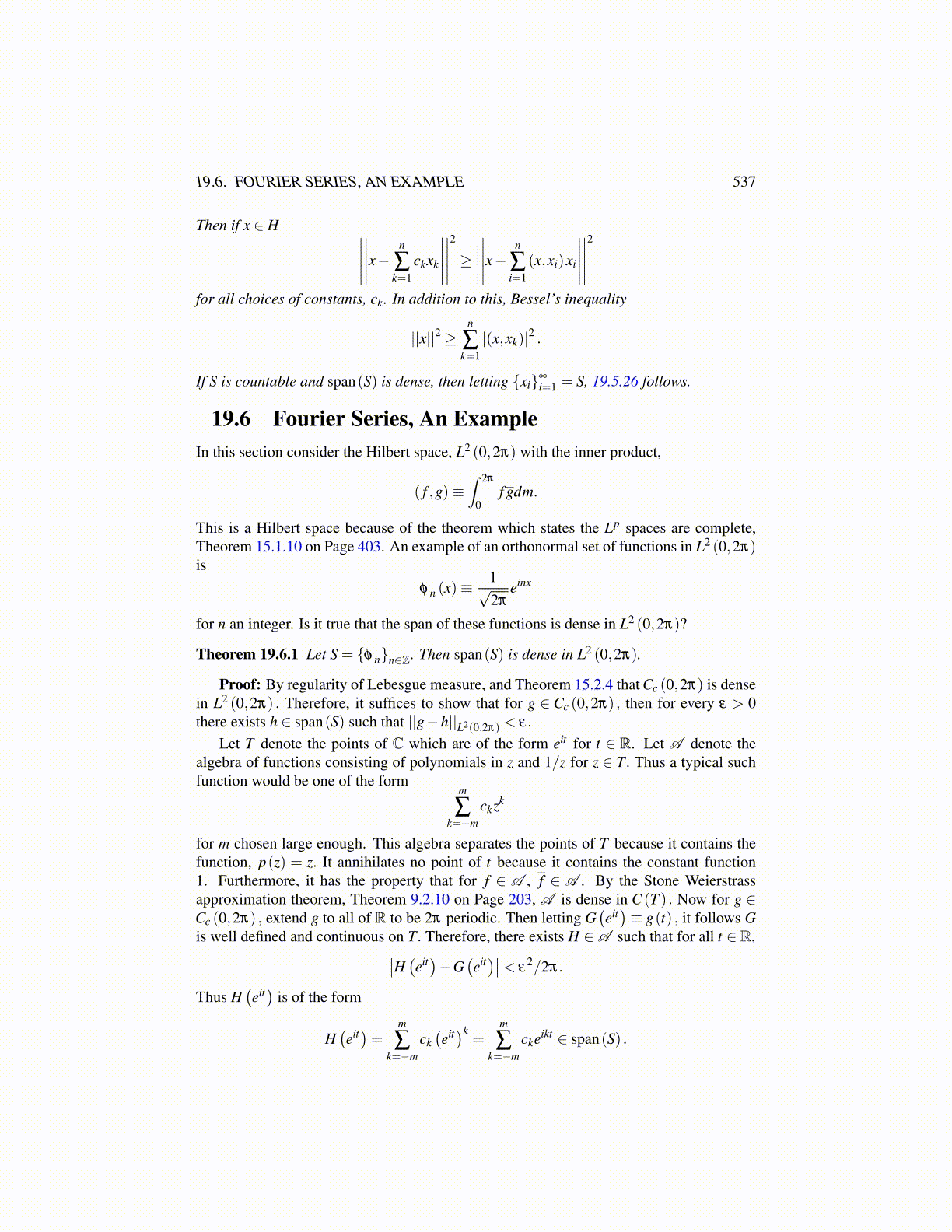
19.6. FOURIER SERIES, AN EXAMPLE 537
Then if x ∈ H ∣∣∣∣∣∣∣∣∣∣x− n
∑k=1
ckxk
∣∣∣∣∣∣∣∣∣∣2
≥
∣∣∣∣∣∣∣∣∣∣x− n
∑i=1
(x,xi)xi
∣∣∣∣∣∣∣∣∣∣2
for all choices of constants, ck. In addition to this, Bessel’s inequality
||x||2 ≥n
∑k=1|(x,xk)|2 .
If S is countable and span(S) is dense, then letting {xi}∞
i=1 = S, 19.5.26 follows.
19.6 Fourier Series, An ExampleIn this section consider the Hilbert space, L2 (0,2π) with the inner product,
( f ,g)≡∫ 2π
0f gdm.
This is a Hilbert space because of the theorem which states the Lp spaces are complete,Theorem 15.1.10 on Page 403. An example of an orthonormal set of functions in L2 (0,2π)is
φ n (x)≡1√2π
einx
for n an integer. Is it true that the span of these functions is dense in L2 (0,2π)?
Theorem 19.6.1 Let S = {φ n}n∈Z. Then span(S) is dense in L2 (0,2π).
Proof: By regularity of Lebesgue measure, and Theorem 15.2.4 that Cc (0,2π) is densein L2 (0,2π) . Therefore, it suffices to show that for g ∈ Cc (0,2π) , then for every ε > 0there exists h ∈ span(S) such that ||g−h||L2(0,2π) < ε.
Let T denote the points of C which are of the form eit for t ∈ R. Let A denote thealgebra of functions consisting of polynomials in z and 1/z for z ∈ T. Thus a typical suchfunction would be one of the form
m
∑k=−m
ckzk
for m chosen large enough. This algebra separates the points of T because it contains thefunction, p(z) = z. It annihilates no point of t because it contains the constant function1. Furthermore, it has the property that for f ∈ A , f ∈ A . By the Stone Weierstrassapproximation theorem, Theorem 9.2.10 on Page 203, A is dense in C (T ) . Now for g ∈Cc (0,2π) , extend g to all of R to be 2π periodic. Then letting G
(eit)≡ g(t) , it follows G
is well defined and continuous on T. Therefore, there exists H ∈A such that for all t ∈ R,∣∣H (eit)−G(eit)∣∣< ε
2/2π.
Thus H(eit)
is of the form
H(eit)= m
∑k=−m
ck(eit)k
=m
∑k=−m
ckeikt ∈ span(S) .